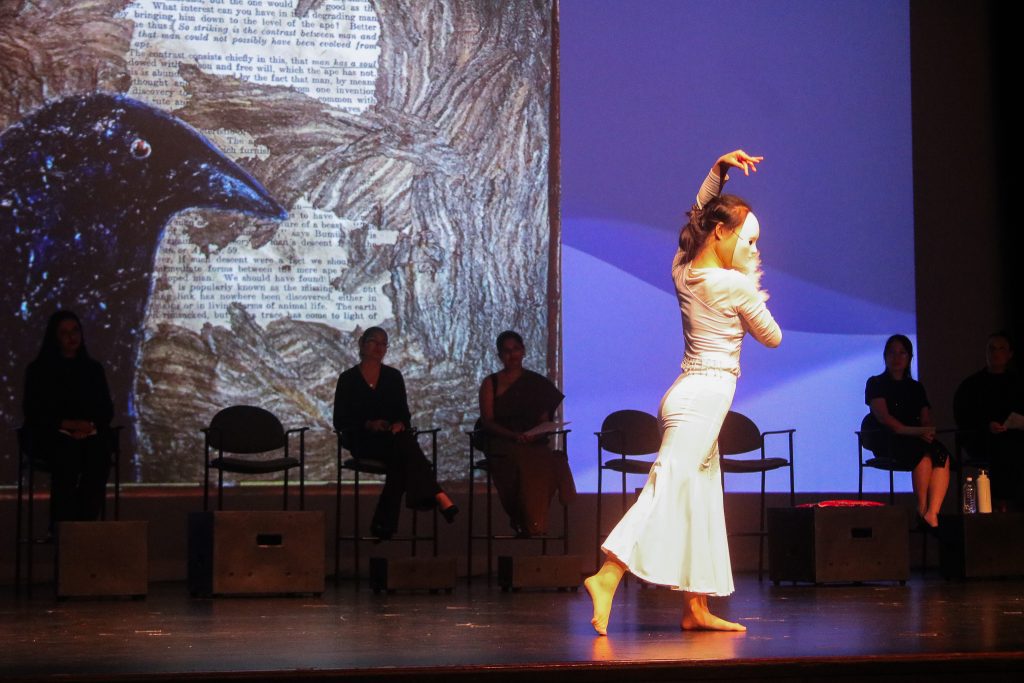“Polychromatic Voices: Translation in Performance,” a multilingual and multimedia performance was held this Saturday in Binghamton University’s Anderson Center.
Sponsored by the Multicultural Resource Center, the Broome County Arts Council, the Tompkins County Arts Council and Wegmans, among others, the performance was directed, written and choreographed by Yangzhou “Yao” Bian ‘20, MA ‘22, a second-year doctoral student in the Translation, Research, and Instruction Program.
The performance is based on Bian’s epic poem “Yorick” which is broken up into 14 different episodes. The piece follows the journey of the Raven — a common symbol for “otherness” in literature — through the eyes of Yorick, the skull in Shakespeare’s “Hamlet.” the poem was written in Chinese before being translated into English.
The show mirrors Bian’s work as each episode includes different illustrations and translations in various languages including Arabic, Bengali, French, Sinhalese, Spanish and more. Along with each episode, Bian included a short choreographed dance routine that reflected the tone of each episode — both in English, Chinese and its respective translation.
“We believe that art is the most profound expression of disquietude that resides in the unconscious of what ought to be seen yet what we take flight from seeing,” Bian wrote in an email. “We hope that the phantasmagoric discomfort Polychromatic Voices embodies may momentarily bring awareness to our troubling perceptions of selfhood and otherness, and inspire self-reflective actions instead of defensive scrutinizations.”
Abantika Bagchi, a translator-presenter in Bengali and a sophomore majoring in business administration, discussed the process of maintaining the essence and nuances of Bian’s work while giving it a new perspective.
“When I first read it, the meaning was not very clear,” Bagchi said. “It’s a very abstract poem, so I had to look at Bengali words and also make sure that if I directly translate it, it might not make sense in Bengali. So I had to change some of the structures to make it make sense in Bengali and also preserve the poetic beauty.”
The show’s purpose revolves around what it means to exist in the confines of defining one’s culture and how we can go about breaking those artificial boundaries. Through the mode of translation, Bian aims to express a sense of togetherness and the simplicity of human beings.
Amaini Varney, the show’s emcee and a junior majoring in human development, described how a performance like “Polychromatic Voices” adds to the campus community.
“It made me realize how hidden the diversity in Binghamton can be,” Verney said. “It’s a [predominately white institution] and you don’t really get to see the different cultures all the time or be represented or be in those spaces where you can see all that’s happening, especially in a play or a show like this, so it’s cool to see all different backgrounds and cultures come together.”
In the future, Bian hopes to continue to expand the accessibility of her work and push the notion that collaboration within artistic spaces is empowering and necessary.
“Through working on the project, we are continuously awed by the talents and insights one another brings on board to our maturation as awakening artists,” Bian wrote. “To our university, as well as the regional, national, and international communities, I am convinced that instead of building walls, we shall always benefit more from events that join hands.”



